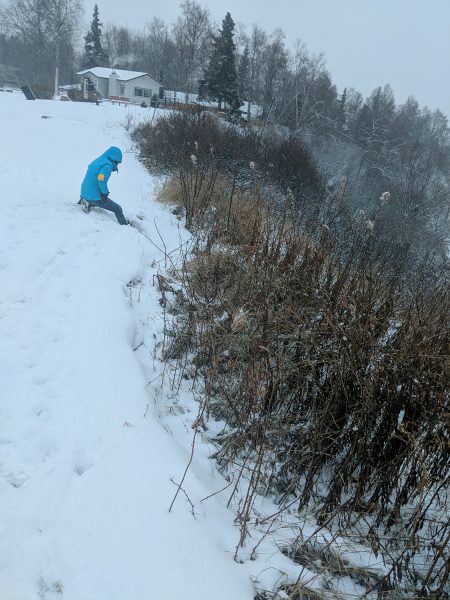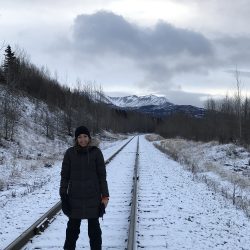In early December, CCEE’s Dr. Ashly Cabas was invited to join the National Science Foundation (NSF) Geotechnical Extreme Events Reconnaissance (GEER) team in response to the magnitude 7 earthquake that occurred on November 30, 2018 near Anchorage, Alaska.
NSF GEER teams consist of geotechnical engineers, engineering geologists, and earth scientists who conduct reconnaissance, collect time sensitive information, and document observations relevant to geotechnical extreme events.
“The deployment of the GEER team had to take place as soon as possible, because we knew we were racing challenging weather conditions in Alaska. The snow could cover ground failures of interest to the geotechnical community, and erase key evidence and geotechnical data that could be used to properly document case studies.”
Dr. Ashly Cabas
Between December 8th and 15th, Cabas worked as part of a 7 member multi-disciplinary team to observe and document the significant geotechnical engineering impacts and lessons from the earthquake. Reconnaissance efforts had to be planned strategically as the team faced low temperatures, snow, and limited hours of daylight. These conditions affected both site selection, and selected routes to the inspection sites. The team worked in close collaboration with local geotechnical engineering consultants, researchers from the US Geological Survey, University of Alaska, the Alaska DOT and the Geotechnical Advisory Commission.

The inspection of the abutments of highway bridges, as well as landslides and ground failures near the Port of Alaska were particularly challenging due to the amount of snow. “We needed to identify traces of potential ground failures in the fresh snow, and then try to uncover sometimes rather long cracks and deep scarps in the ground,” Cabas said.

This seismic event caused structural and non-structural damage to buildings in Anchorage and nearby communities as well as power outages, ground failures, and damage to roadways and railways. The GEER team’s initial report can be found here. The report includes a preliminary description of the recorded ground motions, observed damage to buildings, bridges, ports, utilities, slopes and embankments. A more in-depth report, providing more details on the sites visited will be released in coming weeks.

CCEE Assistant professor Dr. Ashly Cabas is in the Geotechnical and Geoenvironmental Engineering Group within the department. Her research interests include the assessment of seismic hazards, performance-based design in geotechnical engineering, the prediction of the response of soils and foundation systems to seismic loading and dynamic soil-foundation-structure interaction. Her research focuses particularly on the advancement of the current understanding of the impact that local soil conditions have on ground motions, improving the assessment of site-specific seismic hazards, and elucidating the correlation between ground motion parameters and structural response and damage. Visit her website to find out more.

